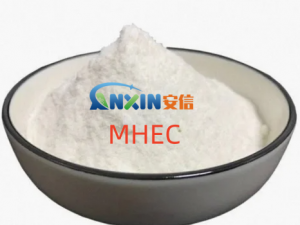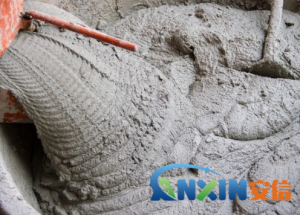Methyl Hydroxyethyl Cellulose (MHEC, a common cellulose ether in building materials, is widely used in dry-mix mortars, tile adhesives, putty powders, and thermal insulation mortars due to its thickening, water-retention, and workability-improving properties. Many engineers are concerned about a key question when using MHEC: What is the recommended dosage of MHEC in cement mortar?
1. Recommended Dosage Range of MHEC in Cement Mortar
Typically, the addition rate of MHEC to cement mortar is relatively low, yet it can significantly improve the mortar’s performance. Based on industry experience and technical data, the recommended dosage is generally:
Ordinary cement mortar: approximately 0.2‰–0.6‰ (i.e., 200–600 grams per ton of dry powder).
Plastering mortar and masonry mortar: typically within the range of 0.3‰–0.5‰.
Insulation mortar or specialty mortars: slightly higher dosages, approximately 0.4‰–0.7‰, may be required. Tile adhesive or high-performance mortar: The dosage can be increased to approximately 0.6‰–1.0‰ as needed, but rarely exceeds 1%.
It should be noted that the recommended MHEC dosage is not a fixed value and is affected by factors such as the mortar formulation, cement type, filler fineness, ambient temperature and humidity. Therefore, in actual production, the optimal dosage is often determined through pilot tests.
2. Factors Affecting the Recommended Dosage
2.1. Cement Type and Dosage
The activity and fineness of the cement, as well as the content of admixtures (such as fly ash and mineral powder), all affect the optimal MHEC dosage. Mortars with high activity and high water consumption typically require more cellulose ether to provide water retention.
2.2. Sand and Filler Properties
Sand particle size distribution and fineness significantly influence water demand. Finer sand or mortars containing lightweight fillers often require an increased MHEC dosage to maintain appropriate consistency and workability.
2.3. Construction Environment
In high temperature, low humidity, or strong wind environments, mortar moisture evaporates quickly, necessitating an increased MHEC dosage to maintain water retention and extend open time.
2.4. Target Performance
If water retention and sag resistance are key, the dosage can be increased moderately.
If workability is the primary concern, a lower dosage will suffice.
For thin-layer applications (such as tile adhesives), appropriately increasing the MHEC dosage is particularly critical.
3. MHEC’s Effects in Mortar
Rational addition of MHEC can significantly improve mortar properties, including:
3.1. Improved Water Retention
Cellulose ether forms a uniform, viscous solution in the mortar, effectively locking in moisture and preventing incomplete cement hydration, thereby increasing strength.
3.2. Improved Workability and Workability
The mortar becomes smooth and fine, making it easier to spread, apply, and compact during construction, reducing bleeding and segregation.
3.3. Enhanced Adhesion and Sagging Resistance
During vertical construction, the mortar is less likely to sag and forms a good bond with the substrate, masonry, or insulation board surface.
3.4. Extended Open Time
MHEC slows the evaporation rate of water in the mortar, allowing construction workers more time to adjust and improve construction efficiency.
3.5. Improved Overall Mortar Performance
This includes crack resistance, durability, and surface quality, ensuring the mortar has good strength and stability after hardening.
4. Usage Recommendations
Test Before Scale-Up: Due to the wide range of formulations, it is recommended to conduct laboratory tests to determine the optimal dosage.
Avoid Excessive Use: Excessive MHEC addition can cause the mortar to become excessively viscous, making it difficult to apply and even affecting strength.
Ensure Uniform Dispersion: During dry mixing, ensure that MHEC is thoroughly mixed with the sand and cement to prevent clumping.
The recommended dosage of MHEC in cement mortar is typically between 0.2‰ and 0.6‰, with specialty mortars allowing for an appropriate increase to 0.7‰ to 1.0‰. The specific dosage should be optimized based on the mortar type, raw material properties, and construction environment. Proper use of MHEC not only improves the mortar’s water retention, workability, and construction performance, but also significantly enhances bond strength and durability. It is an essential additive in modern building mortar formulations.
Post time: Aug-20-2025

